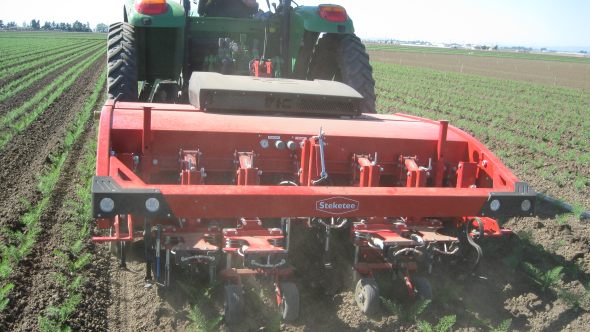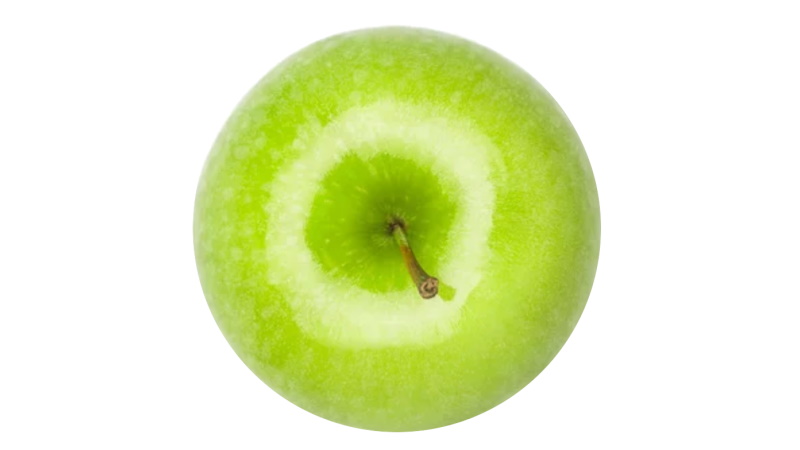New Weeding Technology Available For Vegetable Growers

The Steketee IC weeder is manufactured in the Nether-lands and has been used by growers in Europe for years.
The Steketee IC weeder is manufactured in the Netherlands
and has been used by growers in Europe for years.
Over the past few years we have seen more high-tech developments come to the vegetable production industry. In the past, I have written about the advent of automated thinners for use in direct-seeded lettuce production in California’s Salinas Valley. This technology started in earnest in 2013 and now is very commonplace in the valley.
We have seen a leap forward as the companies involved developed machines capable of thinning three, 80-inch wide beds each with six seed lines. It is quite breathtaking to see this machine pass through the field at nearly 2 miles per hour with the driver thinning 18 seed lines of lettuce in one pass.
The Latest In Automation
Other technological developments include automated harvesters for salad plant lettuce. In addition, evaluations of a new automated vegetable transplanter system are being conducted that, from my perspective, have potential to make great changes in the speed and efficiency of transplanting. And finally, there is much discussion of the use of unmanned aerial vehicles to assess crop growth parameters and for identifying problem areas in the fields that may need to be treated with fungicides and/or insecticides.
In 2015, the Robovator and Steketee IC weeders were demonstrated to growers in the Salinas and other California valleys. These machines have been used by growers in Europe for a number of years and, in fact, Robovator and Steketee are manufactured in the Denmark and the Netherlands, respectively.
New Market For Weeders
Sensing an opportunity opening in the U.S., these companies have made a push to market these machines here. In California, the costs and availability of labor are creating opportunities for machines like these to gain traction.
Standard cultivation in lettuce and many other vegetables is very efficient and removes weeds from 70% to 80% of the bed. However, this system typically leaves a 4-inch-wide band around each seed line that is hand weeded.
The cost to weed the seed lines can vary from $50 to more than $500 per acre, depending on the weed population. The goal of the automated weeders is to diminish the population of weeds in the seed line left by traditional cultivation, thereby reducing the time and cost to weed vegetable fields.
The automated weeders from Europe were originally developed for use on transplanted crops where initially there is a large size differential between the crop and weeds that germinate after transplanting. At present, computers on the machines cannot readily distinguish between crop plant and weeds. Rather, they use the size difference between the crop and the weeds to distinguish between crop plants that will be left and the weeds that will be removed.
Both machines use a split-knife that is activated by the computer as it makes decisions on which plants to keep and which to remove. The split-knife closes in the seed line between crop plants and then opens to go around crop plants.
The aggressiveness of the machine can be adjusted to reach under the leaves of the crop plant and remove a greater percent of the weeds from the seed line. This is where the skill and experience of the operator makes a difference in how successfully the machines are operated.
Lettuce Evaluation
In 2015 we evaluated the machines on direct seeded lettuce following thinning. Under this scenario, weeds that survived thinning are removed 10 to 14 days later. However, weeds that are present in the fields at the time of weeding may be quite large because they may have germinated at the same time as the lettuce. As a result, this puts the automated weeder at a disadvantage because the size difference between weeds and crop plants is reduced.
However, in spite of this issue, in four evaluations, we observed that automated weeders removed 51% of the weeds in the seed line and reduced follow-up weeding costs by 37%.
The results from these studies and from large-scale grower demonstrations were encouraging. Several growers showed interest in this technology, and will initially use automated weeders on transplanted crops.
At this point, it appears that automated weeders can help reduce weeding costs and help ease the labor crunch, and this is of benefit to the vegetable production industry.










